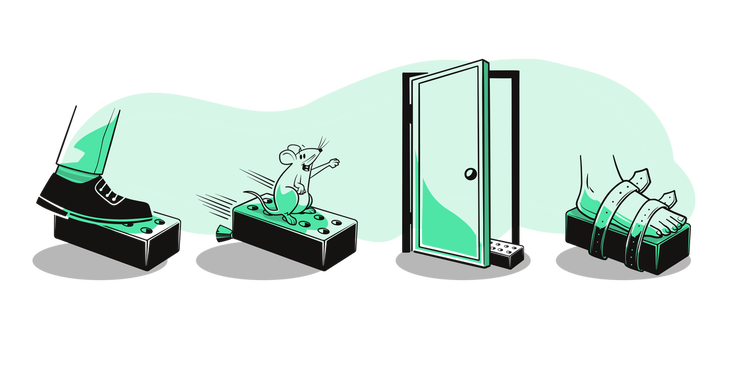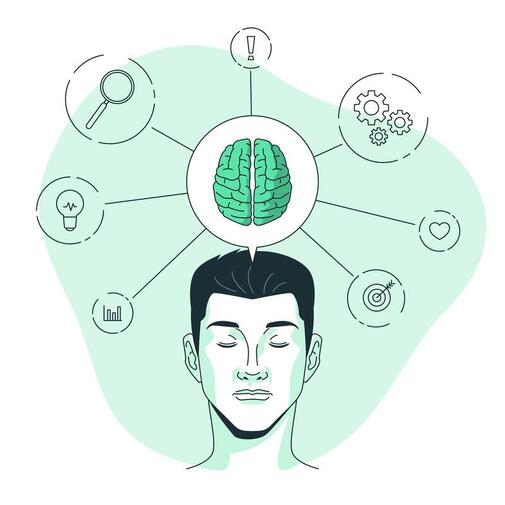|
Whether you are looking for creative solutions to market your business, improve your creative writing/storytelling, come up with material for your first stand-up comedy gig, or achieve virtually any other goal, there is a method that can help dramatically.
I used to think creativity was inborn. Some people have it, some people don't. It's only recently that I have begun to realize how dead wrong I was.
The ability to think creatively, like the ability to play the piano or knit a pair of badass tube socks, is something you can improve at. What's more, improving at it can be oodles of fun. Come to think of it, you never hear anyone use the word "oodle" in its singular form. I wonder why that is...
Now I'm picturing a solitary oodle leaning up against a giant candy cane tree, watching all of the other oodles frolic and laugh amidst the smorgleberry flowers. See! Creative thinking at its finest. If you want to come up with diverse, out of the box ideas that are way better than my oodle one (gasp), then try the Alternative Uses Task (AUT). Created in 1967 by psychologist J. P. Guildford, the Alternative Uses Task (also known as the Alternative Uses Test, although let's steer clear of that "T" word because it's actually hella fun) is designed to promote and measure divergent thinking, which is the ability to come up with multiple ideas, concepts, or potential solutions to a problem. In contrast, convergent thinking is when you zero in on a single answer, and is usually more fact-oriented. Guildford's task is simple. Take a mundane, everyday object like a paperclip or a tennis ball or an automated radio telemetry system. Give yourself a time constraint (the standard is two minutes). In that time, come up with as many diverse uses for the object as possible. For example, a brick can be used to make a wall, or as a weapon, or as a prop telephone in a comedy film. A straw could be used to drink a mohito, build a bridge for some grateful ants, or shoot spitballs at people you loathe (or love). The more original and detailed, the better. When the timer stops, tally up your uses. You may notice that it can be very challenging to come up with lots of different ideas at first. As you continue to do this activity at regular intervals, I bet that you'll be able to come up with far more imaginative uses. Go ahead, try it now. Using the timer below, think of as many uses as you can for: a paper clip. Alternative Uses Task Timer 2:00. Finished? If the creative juices aren't flowing yet, or you want to set a new record, try again using one of these other items:
How are the results evaluated?
I'm glad you asked. While you may not be interested in formally measuring the outcome of this activity, it can be helpful to have clear guidelines for which answers are ideal. Answers are commonly judged based on four criteria: originality, elaboration, flexibility, and fluency. Using a pen to write on paper isn't original; using it as a marker in the sand to show where you hid the buried treasure is. For elaboration, the more details there are, the higher the score. Using a brick to build a wall would rank low on this metric; Using a brick to surreptitiously fill in the hole of a red, crumbling brick wall after spying on poker-playing Russian troops gathered on the other side would rank higher. Flexibility is when you are able to think of answers that don't all fall into one category. Using a straw to drink chocolate milk and regular milk would technically count as two answers, but they aren't necessarily creative ones. The broader the range of potential uses, the higher the flexibility score. Lastly, fluency has to do with the number of responses you can come up with. When I first started using the AUT not too long ago, I could only come up with six or seven uses. Gradually, I was able to develop some imaginative fluency and generate more than twice as many ideas. One caveat: there is no objective way to measure the results. Creativity will always elude fixed criteria and rigid definitions. That's part of what makes it so much fun! Benefits As with many things in life, the rewards from regularly doing this exercise are delayed. At first, it may feel like you aren't making much progress. But, I found that after a few tries I was able to generate many new uses during the allotted time. Even more encouragingly, I started coming up with creative approaches to problems when my mind was relaxed, like lying in bed just before sleep. Other benefits include: fostering deeper understanding, learning more effectively, developing a sense of intuition about which ideas "feel" distinctive, and enhancing your powers of visualization. Bonus: How to Instantly do Better at the AUT In a 2016 Harvard study, participants who were asked to recall specific details from a past experience before trying the Alternative Uses Task managed to come up with far more uses, many of which were reportedly more original. Researchers use this evidence to show that there is a connection between episodic memory (e.g. remembering the reptile show in your backyard on your 6th birthday) and divergent thinking. If you want to prime your brain to think creatively and imaginatively, try recalling a memory from long ago. Who was there? What happened? When was it? Where were you? After reconstructing these memories, return to the problem at hand or try the alternative uses task again. You may be surprised at how your ability to think creatively has improved. Ultimately, creative thinking is a skill that is best developed through deliberate practice. Use your fluency and originality "scores" as feedback, and examine your weaknesses. Do you have trouble coming up with lots of answers, or is it originality that is lacking? Do you get stuck in particular categories (which signals low flexibility) or face obstacles when trying to include more detail? And then, if you are feeling audacious and totally fabulous, drill that particular area. Take a round and focus on getting better at originality, or elaboration. Cut up that straw up and make confetti! Smash that pen open and use the ink as war paint! As with all of life's problems, alcohol and sleep can help you be more creative as well. Meta-Bonus: Apply the AUT to the AUT Cue the Inception soundtrack. What if we took the Alternative Uses Task... and applied it to the Alternative Uses Task? Asides from producing a black whole that would instantly tear apart the fabric of spacetime, we might come up with some cool, unforeseen ways of using the exercise. Seems worth it, doesn't it? I can think of two right off the bat: a mildly amusing party game, and a first date icebreaker. What ideas can you come up with? Please share! Comments are closed.
|


 RSS Feed
RSS Feed
